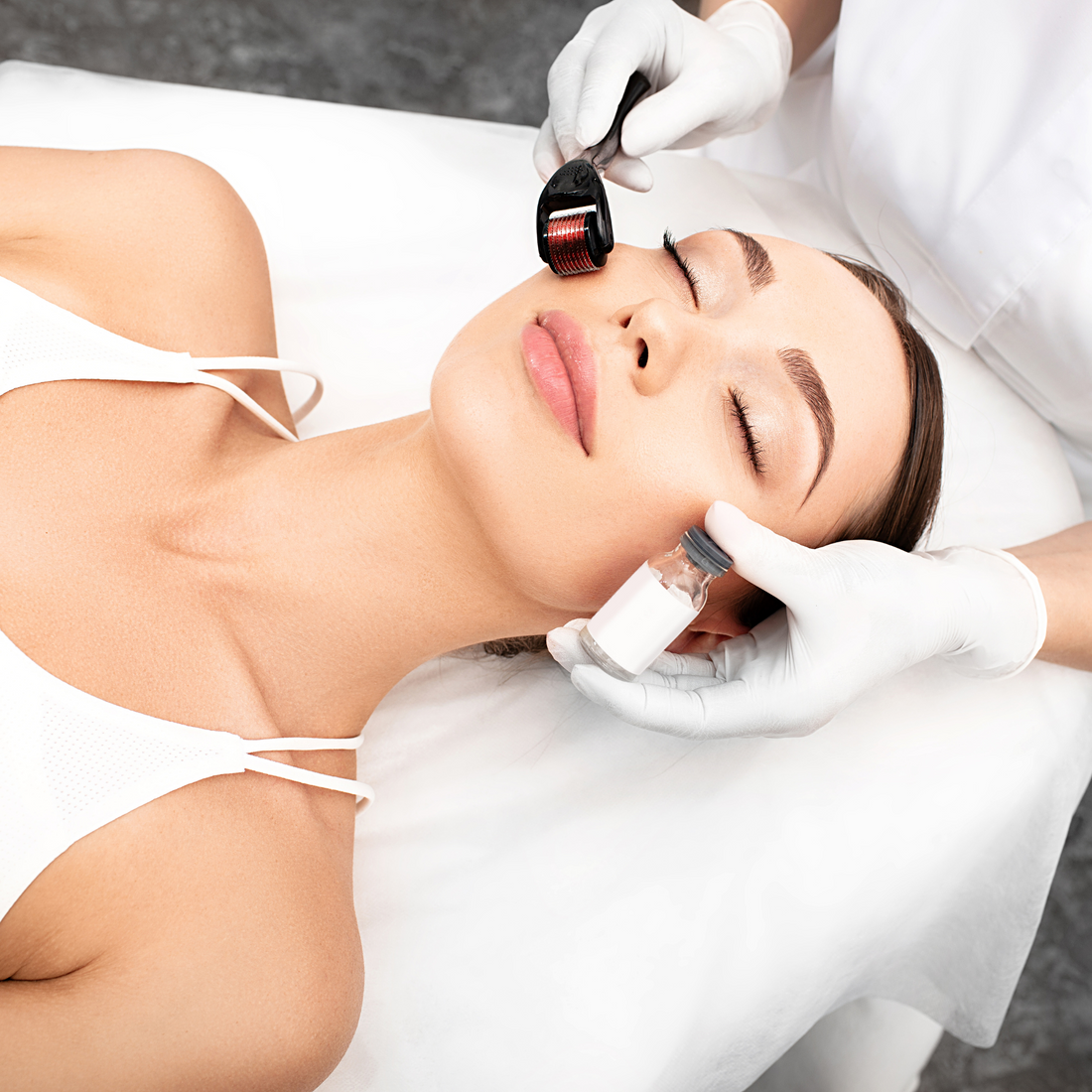
Derma Rolling: Benefits, Risks & What to Know Before You Try | Honey Girl Organics
Share
The Science behind Derma-Rolling
Derma rolling (also known as microneedling) uses a small handheld roller covered in fine needles to puncture the skin in a controlled way. As the device rolls over the face, the tiny needles create superficial micro-channels without damaging the outer skin layer This controlled “injury” triggers the body’s wound-healing cascade: growth factors are released and fibroblasts lay down new collagen and elastin in the dermis. Over the following days and weeks, the new collagen firms the skin and smooths fine lines. In short, derma rolling is intended to rejuvenate skin texture and reduce signs of aging by harnessing the body’s natural repair processes.
Rising Popularity in Skincare
Derma rolling has surged in popularity as an at-home skincare trend. Experts note it “has gained popularity in recent years” because it offers an accessible, minimally invasive treatment for skin rejuvenation. Industry reports confirm the boom: a 2023 market analysis valued derma rollers at about $327 million and attributes growth to rising consumer interest in non-surgical beauty tools.

Social media and influencers have further amplified this trend – platforms like TikTok and Instagram are filled with derma rolling tutorials, especially among millennials and Gen Z . The COVID-19 pandemic also played a role: with salons closed, many people turned to DIY skin treatments, making at-home microneedling even more common.
Scientifically Supported Benefits
- Stimulates collagen production: Microneedling triggers growth factors that dramatically increase collagen and elastin synthesis. Research finds that after multiple sessions, collagen in the skin can increase by several-fold. This collagen induction gradually plumps the dermis, making skin firmer over time.
- Improves texture and tone: As the new collagen matrix builds up, the skin’s surface becomes smoother. Users often observe that fine lines, wrinkles, and even scars (acne or stretch marks) appear reduced after consistent treatment. In clinical terms, microneedling is known to diminish uneven pigmentation and enhance overall skin texture
- Enhances product absorption: The micro-channels created by derma rolling allow topical serums to penetrate much more deeply than they normally would. One review notes that microneedling “allows for enhancement in the absorption of…mainstay topical therapies” across the skin. In practice, serums and moisturizers applied after rolling can reach lower layers of the epidermis, making active ingredients more effective.

Potential Risks and Side Effects
- Skin irritation and discoloration: It is normal for treated skin to be temporarily red and sensitive. However, pressing too hard or using needles that are too long can cause real damage. Experts warn that aggressive or improper microneedling can lead to permanent scarring or pigmentation changes. Overuse can even worsen underlying issues – one dermatologist noted that excessive home needling can irritate the skin and make concerns more noticeable.
- Infection and contamination: Any break in the skin barrier carries infection risk. If the device or the skin is not properly sterilized, bacteria or viruses can enter. Dermatological guidelines caution that at-home rollers “could lead to an infection or scarring” if used improperly. In fact, at-home microneedling has been linked to spreading warts, herpes, and other pathogens when hygiene lapses. Strict sanitation of the roller and skin is essential to avoid complications.
- Not suitable for everyone: Certain skin types and conditions should not be treated with dermarollers. People with active acne, eczema, psoriasis, open wounds, or a history of keloid scarring risk exacerbating their condition. Similarly, those on systemic retinoids (Accutane) or strong topical retinoids should avoid microneedling due to poor wound healing and high sensitivity. Dermatologists generally recommend that anyone with uncertain skin issues consult a doctor before trying microneedling.

Considerations Before You Start
- Needle size and frequency: For home use, start with very short needles. A 0.25–0.5 mm derma roller is safest for beginners. Even then, do not microneedle too often. For example, health experts suggest using a 0.5 mm roller only about once per week, whereas a 1.0 mm roller should be used only every 10–14 days. Anything above ~0.5 mm in length carries a much higher risk of injury and is generally reserved for professional treatments.
- Hygiene and technique: Proper sterilization cannot be overstated. Always soak the roller in alcohol or a disinfectant before and after each session. Thoroughly cleanse the skin and consider using gloves to reduce contamination. When rolling, move methodically (vertical, horizontal, then diagonal passes) with gentle pressure – do not jab or press aggressively. Following published protocols for cleaning and rolling technique greatly minimizes complications.
- Professional guidance: If you have any medical concerns or skin conditions, consult a dermatologist first. A clinician can evaluate whether microneedling is appropriate for you and may offer safer, in-office alternatives. Even if you plan to DIY, knowing the right frequency, needle size, and aftercare (based on your skin type) is best done under professional advice. Never hesitate to seek medical input if uncertain.
Post-Roll Skincare: Choosing the Right Serums
After derma rolling, the skin is primed to absorb nutrients. Studies recommend applying hydrating, collagen-supporting products immediately after treatment. For example, serums rich in vitamin C and hyaluronic acid are known to promote healing and collagen synthesis.
Honey Girl Organics’ HoneyGLO Regenerating Serum and Rose C Serum fit this profile like a glove. They are formulated with natural & organic oils (like rosehip, jojoba, hemp seed) that deliver vitamin C, essential fatty acids, and antioxidants to the skin. Vitamin C especially is scientifically shown to support collagen production and wound healing. When applied after microneedling, these nourishing serums can help reinforce the skin barrier, calm inflammation, and maximize the treatment’s benefits.

In sum, gentle microneedling combined with a rich, nutrient-dense serum (such as HoneyGLO or Rose C) can leave the skin feeling soothed, hydrated, and rejuvenated.
Sources:
(How to use a dermaroller: Uses, tips, and how they work)
( Review of applications of microneedling in dermatology - PMC )

